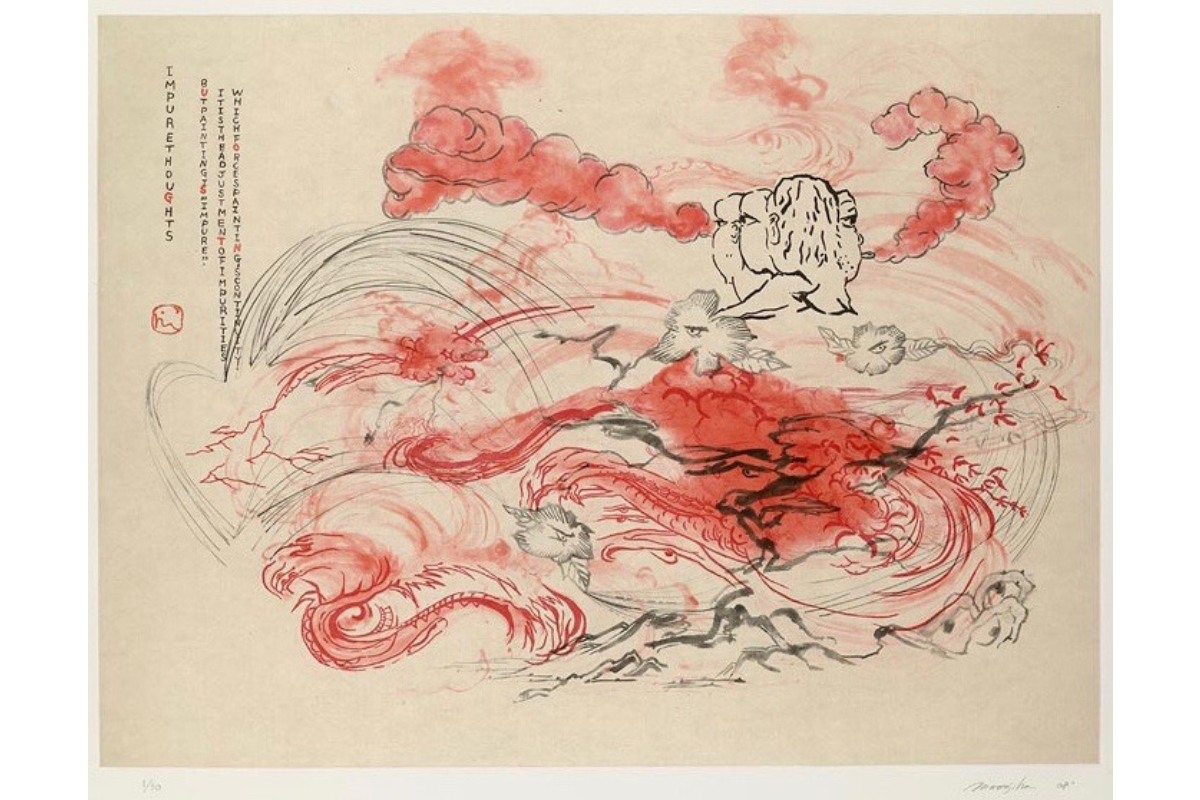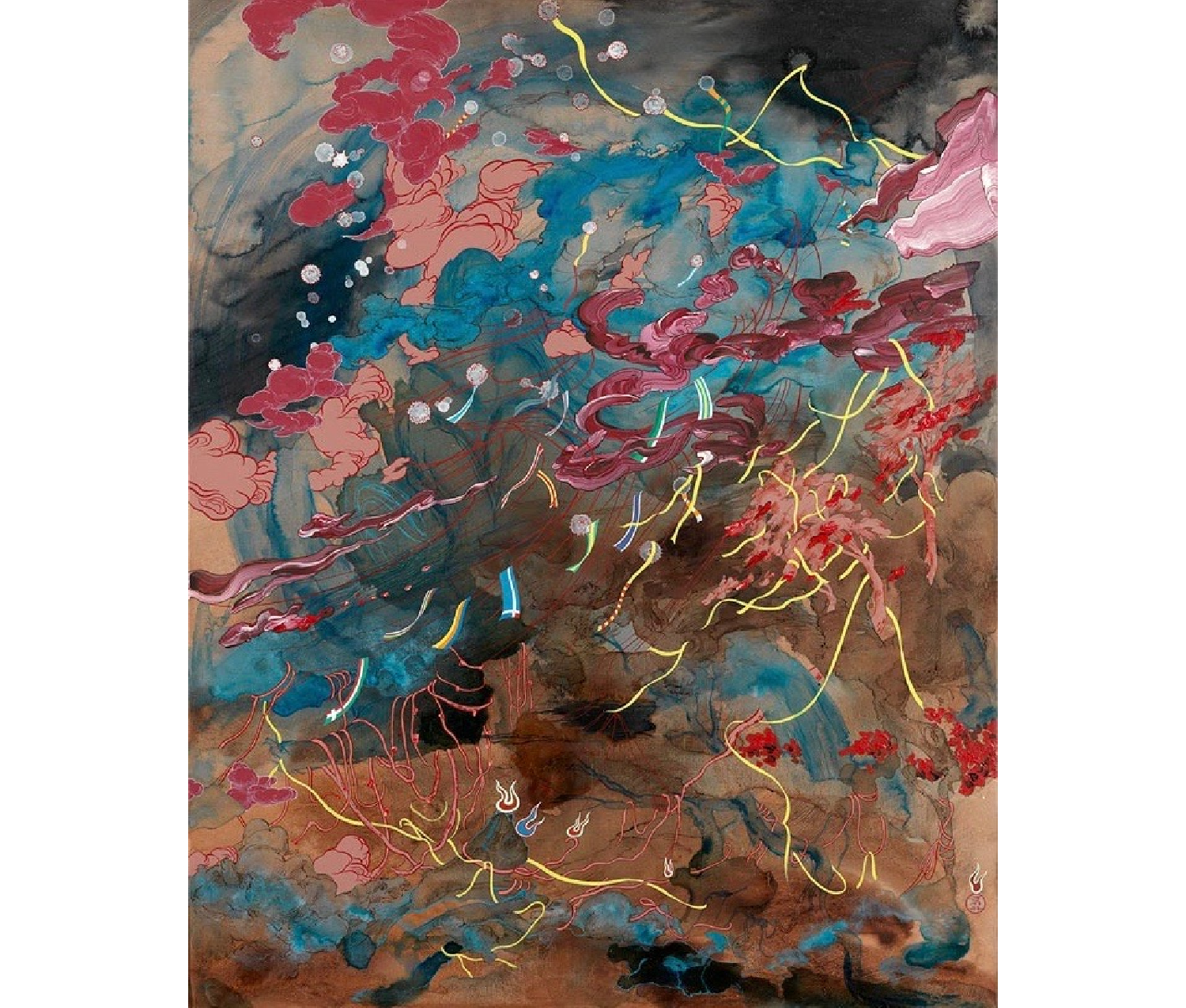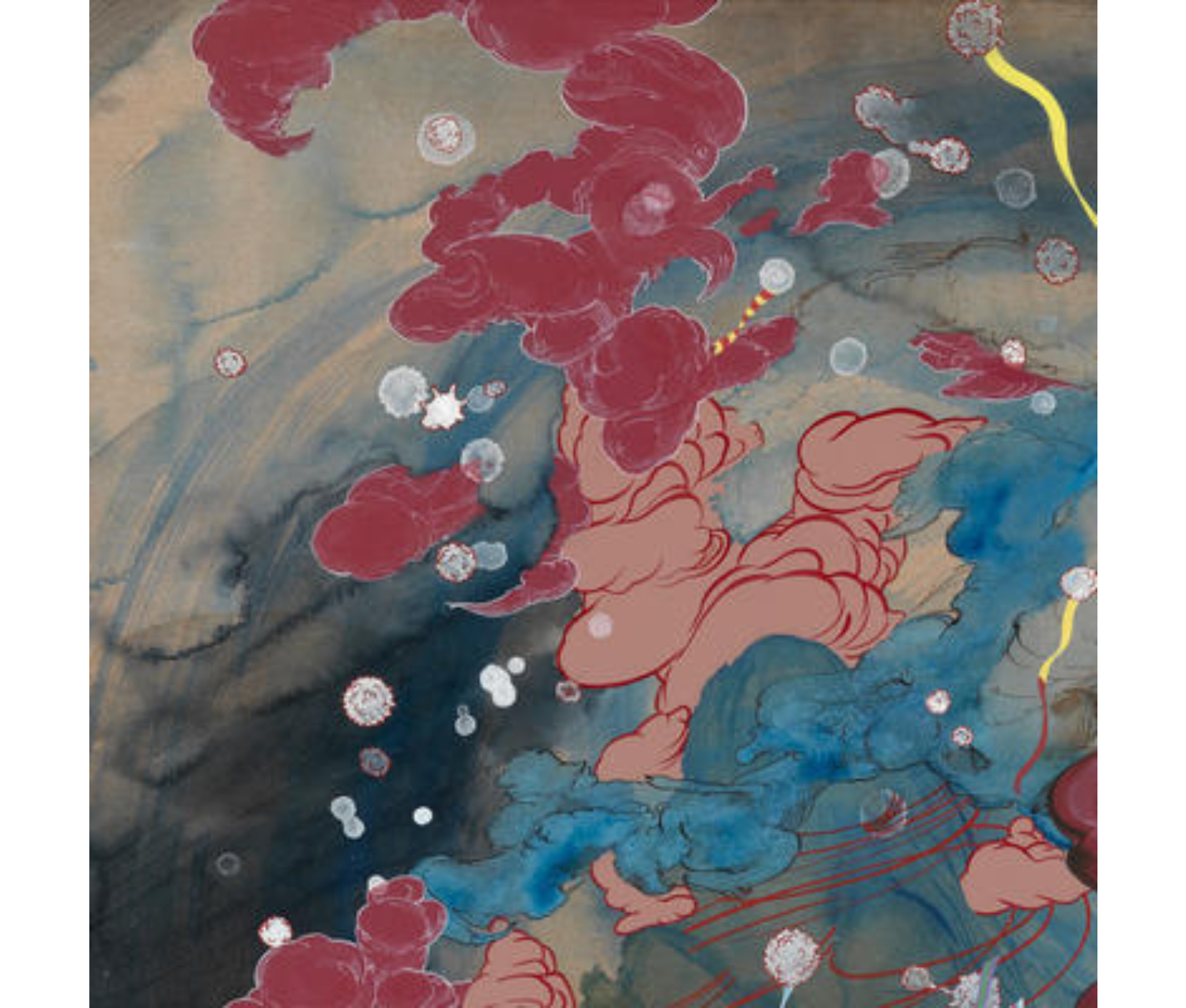
Spotlight on Jiha Moon
Guest blogger Kayla A. Gaskin is a Smith College student, class of 2017, majoring in East Asian Languages and Literatures. She is a Student Assistant in the Cunningham Center for Prints, Drawings, and Photographs.
Though the Cunningham Center owns only a small portion of South Korean works, what the Museum does own is truly striking. Among them is work by Jiha Moon. Jiha Moon, born 1973 in Daegu, South Korea, is a mixed-media artist currently based in Atlanta, Georgia. Moon uses often hanji paper and layers other materials on top: silk, fabric from clothing of loved ones, embroidery, etc., to forge her works. Historically, hanji paper comes from Paper Mulberry trees in Korea and was once used not only for art, but books, fans, artificial flowers, and household items. By using hanji paper, elements of contemporary Asian pop culture – for example anime characters – and Western art techniques, Moon’s pieces become a blend of East and West, reflecting her own background. Her complex marrying of physical materials and multicultural allusions create works with layered meaning.

Jiha Moon. Korean, lives and works in U.S., born 1973. Comfort Zone, 2007. Ink and acrylic on Hanji paper over canvas. Purchased with the Art Acquisition Fund. Photography by Petegorsky/Gipe. SC 2008.55.
However, while Jiha Moon’s pieces are often bursting with bright color and pop cultural references, Comfort Zone's bleak tones are a departure from the norm (image above). The 2007 work features somber shades of browns, blues and dollops of black in the background. The dulled coloring is reminiscent of ancient East Asian works. The faint outline of trees akin to Japanese scroll art, while the mountain rock formation resembles art of Korea’s Joseon Dynasty. Comfort Zone’s background appears similar to a forest, on a cloudy, foggy day. However, on top of the work’s hazy thicket are streaks, splotches, smoke, string, and bubbles mostly in pinks, purples, and yellows with hints of green and blue as well. Therefore like Moon’s other pieces, Comfort Zone presents some familiar figures but for the most part remains very abstract.

Detail of Comfort Zone, 2007
It’s interesting that the work is titled “Comfort Zone” and yet the whole piece seems chaotic – showing a hodge-podge of varying elements scattered all over the place. The way the pieces of colorful detail float, lay strewn or rise into the sky evoke a dreamy feel. It seems like the morning after a carnival’s end, like a revisit to the past, where things lay abandoned, forgotten, and therefore adopt a quasi-existence. Perhaps it reveals an intermingling of earth and the spirit world, or reality and fantasy? The piece’s forlornness and desolation could also be an intentional ploy to evoke irony. Comfort Zone contradicts its title, and therefore may imply the artist’s comfort zone does not exist. Due to her mixed national background, perhaps Comfort Zone is a statement of Moon’s, asserting her lack of belonging entirely to one place.